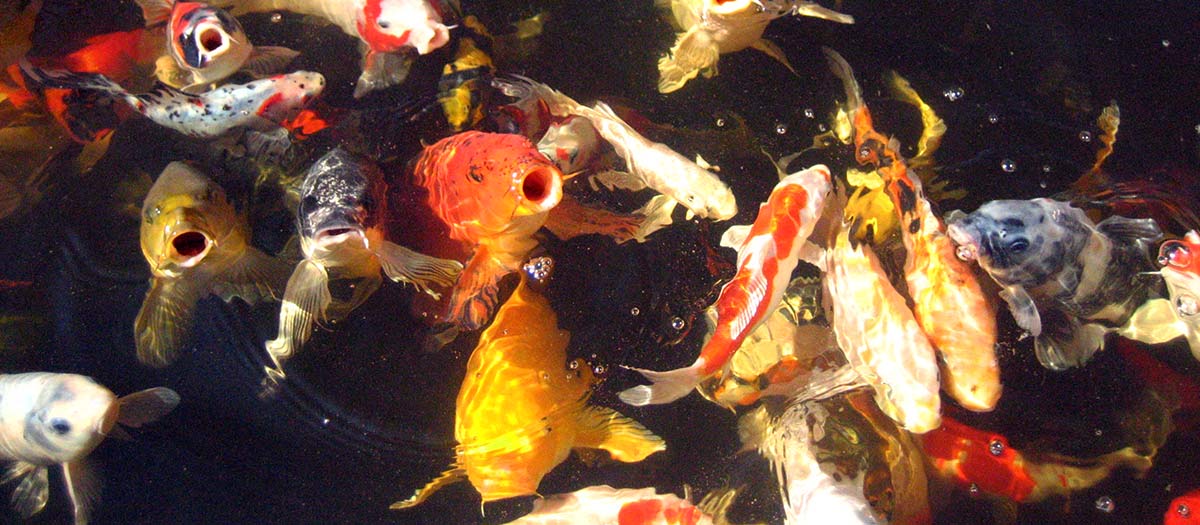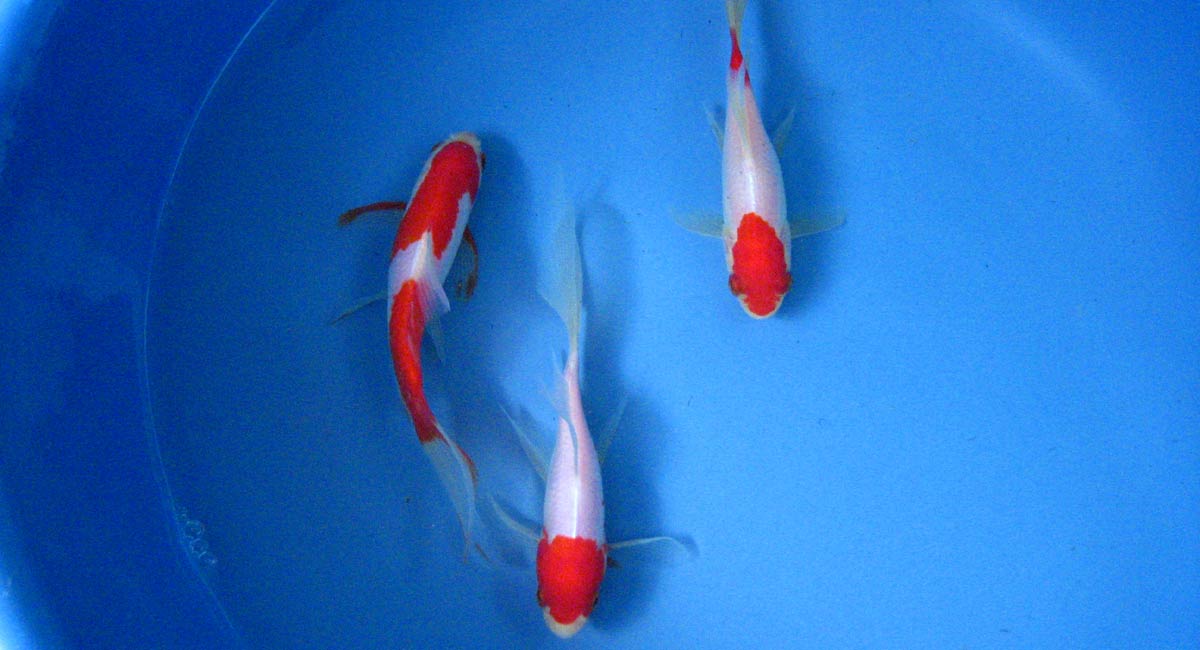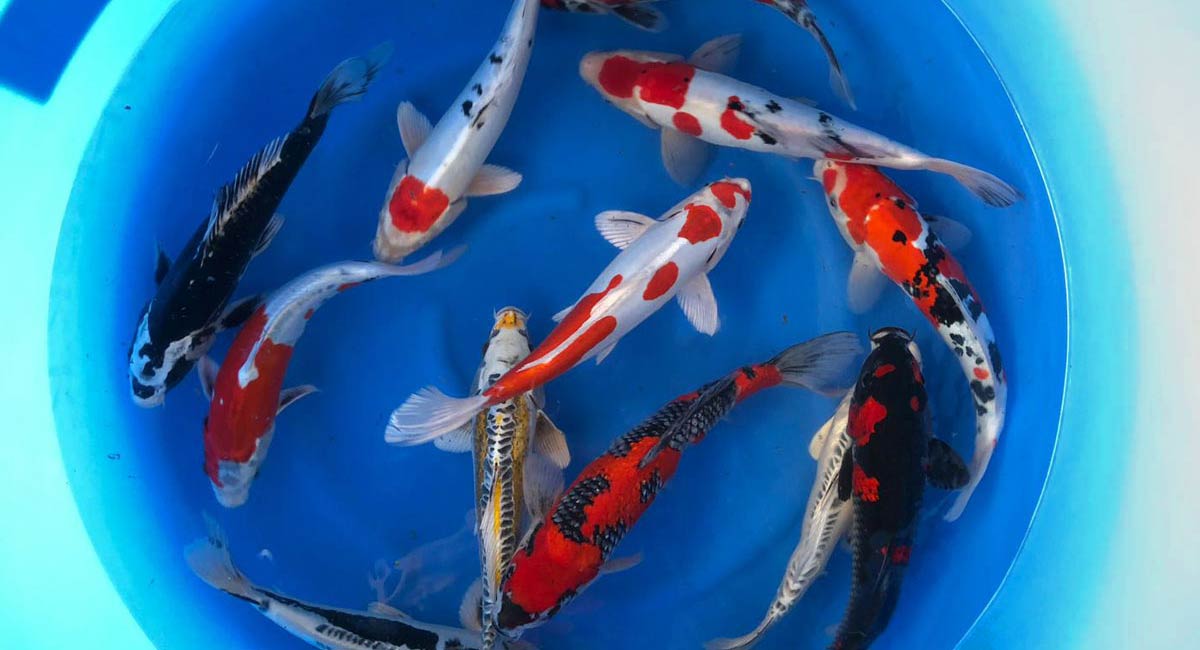Fish make excellent additions to a pond. Not only do they add colour and movement, they also have a calming effect on people. Why else would so many doctors and dentists have aquariums in their waiting rooms. Also, smaller fish voraciously eat bugs, such as mosquito larvae in the pond before they have a chance to hatch. Whether you are planning on keeping koi or goldfish in your pond, here are a few things to remember before you make your purchase.

Goldfish (Carassius auratus) – Originated in China before 1000 AD. Years of selective breeding have produced the many of varieties goldfish available today. Common goldfish like Sarasa Comets and Shubunkins are the best choice for a pond because they are very hardy. Since they can tolerate temperatures from 0-32 C (32-90 F), common goldfish can easily survive the conditions in ponds during the winter. The fancy varieties of goldfish such as Fantails, Orandas, and Ryukins prefer temperatures from 13-32 C (55-90 F) and therefore are not as well suited to spending the winter outdoors. However several of our customers overwinter them in their ponds with success. Goldfish’s maximum size is 35-40 cm / 14-16″ but they rarely grow to that length, they typically only grow to about 20-25c m / 8-10″. They stay considerably smaller than koi, which makes goldfish a better choice if you have a small pond.

Koi (Cyprinis carpio) – Modern koi varieties that are available today originated in Japan. They are basically just carp that have been selectively bred for many generations to produce the vibrant colours and striking patterns that they have. There are 14 classifications of koi, based on their colour patterns. The most popular varieties include the classic Kohaku – the classic red and white koi, Showa – red, black and white koi, and Sanke – another koi with red, black and white, but with more white than Showa. Like goldfish, koi can also tolerate temperatures from 0- 32 C (32-90 F), so they can also survive in the pond during the winter.
Small koi are suitable for most ponds, but you should keep in mind that koi can reach lengths of 90 cm (36 in) or more. Most koi will typically grow 50-60 cm / 20-24″, but even at half this size, they need a large pond to provide them with enough room to live properly. Koi also produce a lot of waste, and need a proper filtration system to maintain a healthy environment for them in the pond. Koi can also cause problems in ponds by constantly stirring up debris and silt from the bottom, rooting in plant pots and eating soft new plant growth.

ORFE (Leuciscus idus) – Originating in Europe where they are found in lakes and slow moving rivers, the most common type for ponds is the golden form, called the Golden Orfe. These fish are quite active, and grow quite rapidly, but they can be somewhat shy unless they are kept in small schools of 6 or more. Orfe can reach a maximum length of 45-60 cm (18-24″), so it may outgrow small ponds.
MOSQUITO FISH (Gambusia affinis)- The mosquito fish is a small and, grey fish with a rounded tail and a upward-pointing mouth adapted for feeding at the water’s surface. closely resembling guppies, which belong to the same family. The females don’t lay eggs, but are live bearing, producing broods as large as 60 to 100 young. Females are larger than males reaching length of 7 cm (2.5″), while males reach only 4 cm (1.5″).
It is best to introduce fish into your pond gradually. Add no more than 5 or 6 small fish at one time to allow your pond to achieve a natural balance and prevent water quality problems such as ammonia build up. In ponds with adequate circulation and filtration, a maximum stocking density of 1-2 inches of fish per 10 square foot of surface area is acceptable. If your pond becomes too crowded with fish, the water quality will deteriorate, leading to elevated levels of ammonia, nitrite, nitrates and phosphate. This stresses any pond fish and usually leads to disease.
Here is another general guideline for how many inches of pond fish you can stock in a well filtered pond.
Of course, this value can change depending on amount of plants in the pond, whether a biological filter is installed, the depth of the pond, and many other factors. When purchasing fish, remember to leave plenty of room for your fish to grow and thrive in your pond.
The amount, and type of food you should feed your fish depends on the season, more directly on the water temperature. Being cold blooded, a fishes body temperature is directly affected by the water temperature. In warmer water, a fish’s metabolic is higher, they are more active, and they will eat more food. In cooler water, their metabolic rate slows, they are less active, and they consume less. The same is true for the beneficial bacteria that live in the fish’s digestive system and break down their food. These bacteria become inactive at about 46°F or 8°C, therefore you should not feed your fish once the water temperature drops below 48°F or 9°C. Since Goldfish and Koi don’t have true stomachs, just very long digestive tracts, it is best to feed them only what will be eaten in a few minutes 2-4 times a day, rather than feeding them heavily just once a day.